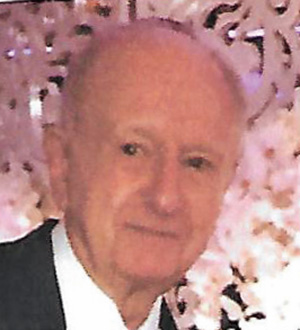
Some of my readers might recall that in the past I have written about my own experience as an 11-year-old boy on Kristallnacht, November 9/10, 1938. Our father had been arrested the night of the ninth and was being held in the Festhalle in Frankfurt together with thousands of other Jewish men. We (my brother Hermann and I), not knowing what had happened in the city that past night, were as always going to go to school by bicycle. As we approached the Uhrtürmchen (little clock) intersection on a main shopping street, we were stopped by what we saw in front of us. The famous Friedberger Anlage Shul, founded by Rabbi Samson Raphael Hirsch, was in flames. The fire department stood there, but only to make sure that neighboring houses did not catch fire. They made no attempt to put out the fire in the shul. We did not know what to do, until a man, probably not Jewish, came over to us and told us that we’d better go home.
That was my personal experience that day. It was therefore with great interest and still-live memories that I read an article just published by Rabbi Gil Perl (my grandson) who is the head of school of Kohelet as well as co-designer and creator of the Yeshiva Lab School.
I would like to share the article with you.
On Kristallnacht, a shul in Meiningen, Germany, was burned to the ground, like hundreds of others, and now 71 years later the synagogue emerges from the rubble.
Here is what Gil wrote:
Two years after fleeing Nazi Germany as a 14-year-old boy, Dieter Gruen learned that the beautiful synagogue in which he had had his bar mitzvah, and in which his father had been a cantor, had been burned to the ground. Though the young Dieter had safely reached the shores of the United States, the rest of his family was still living in the small town of Meiningen on the fateful eve of Kristallnacht and bore witness to the destruction of their cherished place of worship.
Not long thereafter, Dieter’s father was arrested and sent to the Buchenwald concentration camp. Luckily, though, he was one of the few who were able to secure a release under the condition that he flee the country within 24 hours. The Gruens ultimately reunited and rebuilt their family in Chicago. Their synagogue, however, remained a heap of rubble, and the Jewish community of Meiningen, which had persevered since at least the 13th century, ceased to exist.
Dieter Gruen went on to accomplish the extraordinary. After completing his undergraduate degree in chemistry at Northwestern University, he was invited to join the Manhattan Project in 1944 where he was instrumental in developing the process of separating uranium isotopes. After earning his PhD from the University of Chicago in chemical physics and organizing scientists to prevent the proliferation of nuclear weapons, Gruen went on to a distinguished 65-year career as a lead scientist at Argonne National Laboratory with over 400 peer-reviewed publications and 60 patents to his name.
For all that he accomplished and built in his lifetime, however, Gruen could not rebuild the shul of his youth. And so his grandson decided to do it instead.
Dan Ostrov is a Philadelphia-based visual artist with impressive accomplishments in his own right. Well known in Philly’s artistic circles for his unique wood-based installations, Dan was commissioned to build the sculpture for the basilica in Center City when Pope Francis visited Philadelphia in 2015. Not bad for the grandson of a Nazi refugee.
For the past 12 years, Dan has also been teaching and inspiring students at Kohelet Yeshiva as our middle and high school art teacher. It was in this capacity that we approached him over a year ago about building the aron, mechitztot, bimah, amud, and ner tamid for our new middle school beit midrash. We thought it would be deeply meaningful for our students to know that their teacher had constructed the furniture in their most sacred space with his own hands. Little did we know that the person who would be most moved by the project would be Dan.
He later told me that the night after we accepted his proposal he called his grandfather, Dieter Gruen (a spry 96-year-old today) and told him that he was going “to build a synagogue” which would be used daily by Jewish children. Dan said his grandfather started crying. All he could think about was the shul of his childhood and how life had, in some respects, come full circle.
This afternoon, Dan, accompanied by his grandfather and their family, formally dedicated our new beit midrash furniture. In doing so, our students saw for the first time how the mechitzot, made in Dan’s unique style of curved wooden slats, flowed from the back of the beit midrash up to the aron in front. There, beneath his glass-blown ner tamid, the slats part ever so gently, encouraging one to open the wooden doors of the aron kodesh. When one does, one sees the most unique feature of Dan’s newest installation. Inside the aron, on the wall behind the sifre Torah, is an image laser etched onto a backlit mirror, of his grandfather’s once-forgotten shul in Meiningen.
By Norbert Strauss











